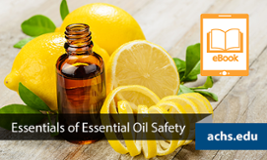Our pets are more than just animals; they are cherished members of our families. It's only natural that we want to ensure their well-being and happiness. Just like humans, pets can benefit from the soothing and healing properties of essential oils. From supporting nervous energy to promoting paw health and more, essential oils can be a wonderful addition to your pet care routine. In this blog, we'll explore the world of essential oils for pets, with a special focus on cats and dogs, while keeping their safety as our top priority.
Before we begin exploring aromatherapy for our beloved pets, it is imperative to emphasize the importance of ensuring their safety when using essential oils. Aromatherapy can offer various benefits for animals, such as stress reduction, calming effects, and alleviating certain health issues. However, it is equally important to be aware of the potential risks associated with essential oil usage. Not all essential oils are safe for pets, and some can be toxic, causing adverse reactions or even harm to our four-legged friends. Therefore, it is vital to educate oneself on which essential oils are safe for specific animals, their appropriate dilution, and the proper methods of application. Safety should always take precedence when incorporating aromatherapy into your pet's wellness routine to ensure their well-being and happiness.
Safety First: Using Essential Oils with Pets
- Consult Your Vet: Always consult your pet's veterinarian before introducing essential oils into their routine. They can provide guidance based on your pet's specific needs.
- External Use Only: Never allow your pet to ingest or consume essential oils. These should be used externally only.
- Dilution Matters: To avoid skin irritations, always dilute essential oils with a carrier oil before applying them topically. The dilution rate varies depending on the oil and the type of pet.
- Monitor for Reactions: After applying a new essential oil, keep a close eye on your pet for any adverse reactions. If you notice irritation, stop using it immediately.
- No Rinsing with Water: If an essential oil irritates your pet's skin, don't rinse with water, as this can make it worse. Instead, rinse with milk, olive oil, or soap and water to neutralize the effects.
- Avoid Sensitive Areas: Keep essential oils away from your pet's eyes, lips, genitals, and anus. This includes avoiding putting essential oils in or around litter boxes.
- Special Caution for Cats: Cats are exceptionally sensitive to essential oils, more so than other species, and some oils can be toxic to them. Extra care should be taken when using essential oils around cats.
Using Essential Oils with Pets
Now that we've covered safety guidelines, let's explore how to use essential oils with your furry friends:
- Inhalation: This is one of the safest ways to use essential oils around pets. Use a diffuser to disperse the oil throughout a room. It's a quick way to introduce the oil into their bloodstream without direct skin contact. Be sure the area is well ventilated and your pet can leave the room if the aroma overwhelms them.
- Topical Use: For direct benefits, mix essential oil with a carrier oil for topical application. This method reduces the risk of skin irritation. Be sure to monitor your pet during and after application.
How to Dilute Essential Oils for Animals
Dilution is key to ensuring your pet's safety when using essential oils. The dilution ratio varies depending on the type of pet you have. For specific guidelines, refer to this dilution ratio chart.
Top Essential Oils for Pets
Here's a list of some of our favorite essential oils that are safe to use with both cats and dogs:
- Lavender Oil Lavandula angustifolia
- Chamomile Oil Chamaemelum nobile
- Cedarwood Oil Juniperus virginiana
- Helichrysum Oil Helichrysum italicum
- Lemon Oil Citrus limonum - do not overuse
- Peppermint Oi Mentha xpiperita - do not overuse
- Petitgrain Oil Citrus aurantium
- Frankincense Oil Boswellia carterii
- Turmeric Oil Curcuma longa
- Orange Oil Citrus sinensis - do not overuse
Essential Oils to Avoid for Dogs
While many essential oils are safe for dogs, some should be avoided:
- Wintergreen Oil Gaultheria fragrantissima
- Australian Tea Tree Oil Melaleuca alternifolia (*Please see below for additional information on Tee Tree Oil)
- Birch Oil Betula lenta
Essential Oils to Avoid for Cats
Cats are particularly sensitive to certain essential oils and should not be exposed to them:
- Basil Oil Ocimum basilicum
- Bergamot Oil Citrus aurantium var. bergamia
- Grapefruit Oil Citrus paradisi
- Lime Oil Citrus aurantiifolia
- Tangerine Oil Citrus reticulata
- Birch Oil Betula lenta
- Cinnamon Oil Cinnamomum zeylanicum
- Clove Oil Syzygium aromaticum
- Fennel Oil Foeniculum Vulgare
- Australian Tea Tree Oil Melaleuca alternifolia (*Please see below for additional information on Tee Tree Oil)
- Oregano Oil Origanum vulgare
- Thyme Oil Thymus vulgaris
- Rosemary Oil Rosmarinus officinalis
- Spearmint Oil Mentha spicata
- Wintergreen Oil Gaultheria fragrantissima
Tea Tree Oil: Australian Tea Tree Melaleuca alternifolia vs New Zealand Tea Tree Leptospermum scoparium
Tea Tree Melaleuca alternifolia essential oil has been recently in the limelight regarding the oil's toxicity. The following are possible reactions to Tea Tree Melaleuca alternifolia (Holland, 2020):
- Depressed, lethargic, breathing, and respiratory difficulties
- Drying, whining, panting, salivating, drooling, rubbing face/body
- Skin irritation: rash, welts, itching, scratching
- Inability to walk (stumbling, stupor-type reaction)
- Muscle weakness, body tremors, paralysis
- Low body temperature
- Elevated liver enzymes
- Loss of consciousness, seizures
A research study conducted over a 10-year timeframe (2002-2012) assessed the toxicity of Tea Tree Oil Melaleuca alternifolia in animals. The results showed increased drooling, signs of central nervous system depression or lethargy, loss of motor function, and tremors with a 100% application of Tea Tree Oil (Kahn, McLean and Slater 2014). This study on humans showed the toxic effects, suggesting that dogs may also receive similar results. (ACHS, Animal Aromatherapy FAQ)
Aroma Pet Diffuser Recipe
10 drops Sweet Orange Oil Citrus sinensis
10 drops Lavender Oil Lavandula angustifolia
6 drops New Zealand Tea Tree Oil Leptospermum scoparium ct. triketones (*See note below regarding Australian Tea Tree oil, specifically Melaleuca alternifolia which is a different oil.)
5 drops Lemon Oil Citrus limonum
5 drops Geranium Oil Pelargonium graveolens
3 drops Ginger Oil Zingiber officinale
3 drops Neroli Oil Citrus aurantium
Instructions: Blend all the oils. It can be used in an electric diffuser or an aroma pot with a candle. This Aroma Pet formula will disinfect your home while diffusing a cheerful pet odor-free aroma.
Essential oils can be a wonderful addition to your pet's wellness routine, offering a range of benefits from relaxation to skin health. However, it's crucial to prioritize safety and follow the guidelines mentioned in this blog. Always consult your vet, use essential oils with caution, and choose oils that are safe for your specific pet.
Remember, a happy and healthy pet makes for a happier home, and aromatherapy can be a valuable tool in achieving that harmony.
Learn more about our Aromatherapy programs and courses
- Holistic Aromatherapy for Integrative Health™ Micro-Credential
- Certificate in Aromatherapy
- Diploma in Aromatherapy
- Graduate Certificate in Aromatherapy
- Master of Science in Aromatherapy
- Doctor of Science in Integrative Health with Aromatherapy Specialization
Take the Next Step:
- Speak with an advisor
- Tuition: Learn more about tuition and discuss payment options to fit your budget with your advisor.
- Submit an application
Sources:
- ACHS: Animal Aromatherapy FAQ
- ACHS: Can You Use Essential Oils With Cats?
- Forbes: Essential Oils For Cats and Dogs
- Roark, J. (n.d.). Using Essential Oils with Animals Safely. Essential Oil Vet. https://essentialoilvet.com/safety/
- Holland-Azzaro, K. (2020). Animal Aromatherapy. Ashi Therapy Ashi Aromatics Inc. https://www.animalaromatherapy.com.
- Kahn, S. A., McLean, M. K., & Slater, M. R. (2014). Concentrated tea tree oil toxicosis in dogs and cats: 443 cases (2002–2012). Journal of the American Veterinary Medical Association, 244(1), 95-99. doi:10.2460/javma.244.1.95







